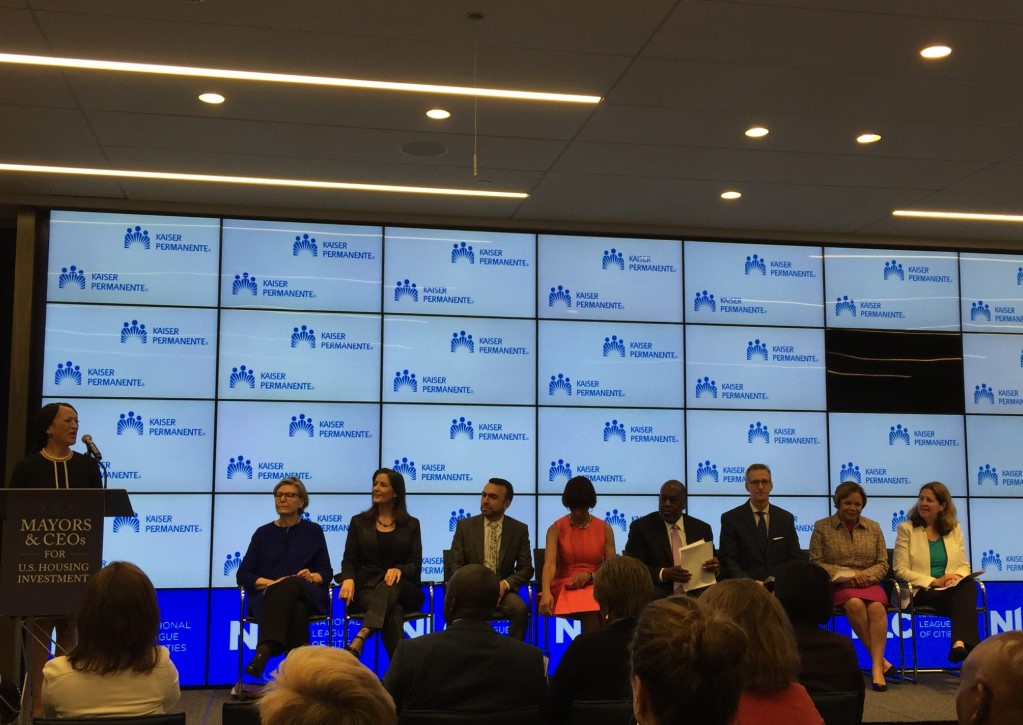Note: Today we have a guest blog post from Bernard Tyson, president and chief operating officer of Kaiser Foundation Hospitals, Inc., and Kaiser Foundation Health Plan. He recently wrote about Kaiser Permanente’s work to reduce its environmental footprint – not just as an business imperative, but as a core strategy for improving the health of its members and the communities it serves. Read more about Bernard Tyson through his bio in the Kaiser Permanente News Center.
There is little disagreement that greenhouse gas emissions, which are known contributors to climate change, have led to a rise in pollution and adverse health impacts. In fact, the World Health Organization estimates that urban air pollution causes about 1.2 million deaths per year and exacerbates cardiovascular and respiratory illnesses, particularly in sensitive populations like the elderly and young and in minority communities that are disproportionately impacted by urban and industrial activities.
Ironically, the health care industry – responsible for preventing and treating these types of illnesses – also contributes to the problem. According to a study by the University of Chicago, 8 percent of the total carbon emissions in the United States are attributable to health care activities. Not surprisingly, hospitals are by far the largest carbon emitters due in large part to strict requirements for temperature control, ventilation and lighting, and, of course, 24/7 operations.
Compounding the problem is the fact that many hospitals and health care facilities were built decades ago and have not been remodeled to use energy more efficiently. This is a similar situation to many government-owned buildings across the country. Late last year President Obama announced a multi-billion dollar government and private sector commitment to finance building renovations to make government-owned properties more energy efficient, and to create jobs in the process. The energy performance contracts proposed by the federal government, with improvements paid for by energy savings, are similar to those being used by schools, colleges and municipalities.
Given that the health care industry in America has nearly 600,000 facilities – and many of their workforces are equal in size to large government agencies (Kaiser Permanente’s workforce, for example, is of similar size as the U.S. Department of Homeland Security), health care organizations have a real opportunity to adopt sustainable business practices that reduce emissions, increase energy efficiency and the use of clean energy. This in turn will better protect public health and create jobs, achieving results that are in line with our focus on wellness and prevention, and helping grow the economy.
In January, Kaiser Permanente set an aggressive business strategy of reducing our greenhouse gas emissions by 30 percent by 2020, as compared to 2008 levels. To achieve this goal, we are adopting sustainable energy measures, both related to the construction of new facilities and the upgrading of existing facilities, such as installing new lights and window-film installations. These measures will not only reduce the impact of our operations on the environment, but are expected to save roughly $1 million per year in energy costs as well, which is good news for our members.
We are also investing in clean energy sources, such as deploying solar energy and fuel cell generation capacity at facilities throughout California. In Maryland and the District of Columbia, we are purchasing renewable energy credits to offset 100 percent of our carbon intensive activities in those markets.
And Kaiser Permanente is not alone. Last year for Earth Day, Digital Health committed to reducing greenhouse gas emissions and energy use, and increasing sourcing of power to green energy. The University of California at San Francisco has also established a robust sustainability strategy to reduce carbon emissions with an ultimate goal of becoming climate neutral.
I hope these climate change commitments are just the beginning for our industry. Together, we have an opportunity – and a responsibility – to help prevent climate related illnesses and improve the health of our communities.


